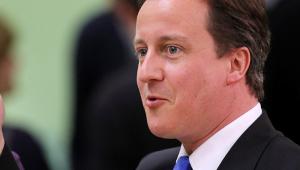In five weeks' time the government will announce its spending plans for the remainder of this Parliament. The Institute for Fiscal Studies has estimated that, due to the current squeeze, average departmental spending will fall by around 18 per cent between 2010-11 and 2017-18 in real terms. However, spending on schools has so far been protected from any such reductions. That can and should end now.
Over the past decade spending per pupil has risen by 86 per cent in real terms and has been protected in the current Parliament. For comparison, services such as policing and justice have seen budgets fall by 25 per cent in real terms in the 2010 Parliament alone. They expect further cuts in the 2015 Parliament. Worryingly, that increase in school spending has occurred as pupil numbers have fallen by 5 per cent. The future is less rosy with the number of English primary and secondary school children projected to rise from 7 million to 8 million between 2012 and 2020.
Taken together, those trends spell problems for the UK's schools. From a golden period of increasing funding and decreasing pupil numbers in the 2000s they will need to adapt to a situation of rising demand and falling funding. The ring fence has given the education system a brief reprieve and time for consolidation; however, it is clearly unsustainable when some other departments have already suffered budget cuts of 25 per cent. The question now is how schools adapt.
As schools change to accommodate to the new environment of austerity the overriding concern must be for the quality of children's education. Michael Gove is rightly concerned about the quality of education in the UK. To determine whether there is scope for budget cuts that do not compromise quality, Reform turned to data from Ofsted and the Department for Education.
Our first finding was that, after accounting for differences in schools' circumstances, there are huge, largely inexplicable variations in the funding per pupil that schools receive. Even once we have controlled for the difference in circumstances, some schools receive more than double the funding of comparable schools. That suggests there is scope for reducing overall funding.
We next asked whether schools with higher funding, controlling for circumstances, tended to have higher attainment. Consistent with previous studies, we could find no evidence of higher funding leading to better outcomes for pupils in either English or maths. Nor is there any evidence that the better funded schools manage to deliver higher quality teaching, as rated by Ofsted.
To summarise, there are schools with funding many times that of others, who are performing no better and whose pupils are doing no better. For some of these schools there will be extenuating circumstances, but there is clearly scope for significant savings across state schools without compromising quality. No doubt that will be a difficult transition for many schools but it is achievable.
The full report on schools spending is available via the Reform website












